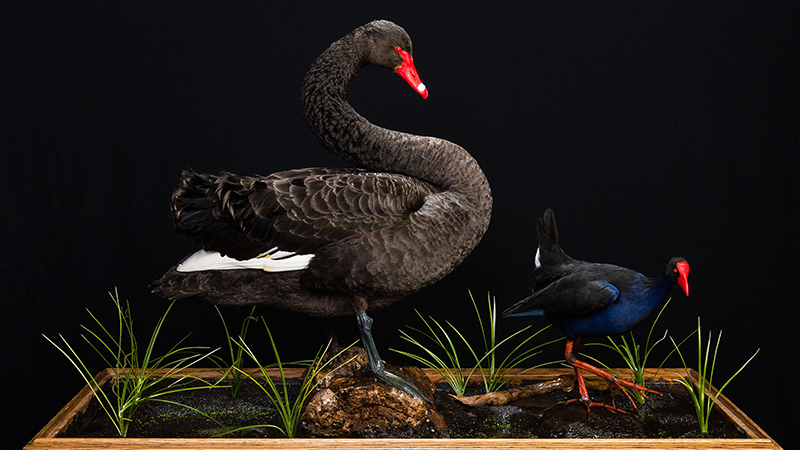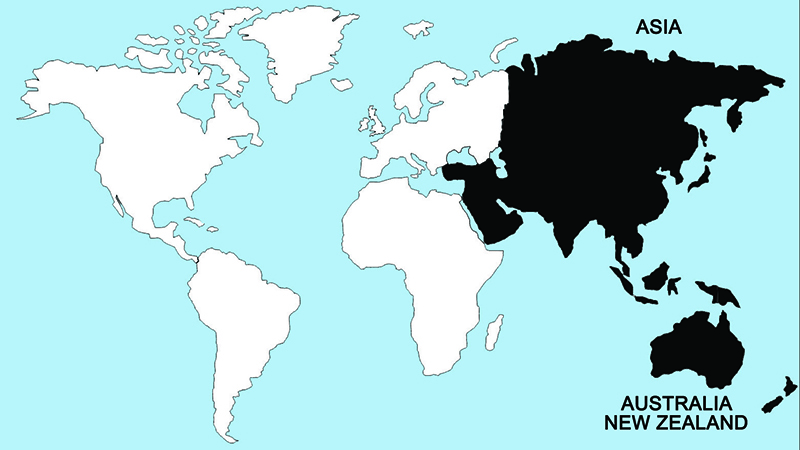Purple Swamp Hen

The purple swamp hen of Australia is generally considered to be the same species as the more widespread purple gallinule of Africa, Madagascar, southern Asia, and the East Indies. Gallinules are relatively shy and are usually found in rather inaccessible habitats. Vocalizations are an important part of their social communications, and both sexes have an astonishing variety of notes.
Breeding groups or 3–4 adults or subadults are formed. Polygynous mating and egg-laying by up to five or six birds in the same nest or closely adjacent nests have been observed. A well-developed and carefully constructed runway is built from the water to the nest and is invariably used by the adults. The clutch size is usually about 6–8 eggs, probably laid on consecutive days. Incubation is shared by both sexes, in several-hour shifts, and the changeover may be marked by the presentation of a reed or leaf to the incubating bird, which adds it to the nest before leaving. Incubation lasts about 22 days. Depending on when incubation began, the young may hatch all at the same time or at intervals over a period of up to a week. They are fed by the parents, mainly insects and other small animals. After a few days the chicks leave the nest and closely follow the parents, who continue to feed them for several weeks. By about five weeks of age the young can largely feed independently, and they can fly in about 6–7 weeks.
Regions Birds Are Found

Collection Location & Year
New Zealand 2010
Taxonomy
| Order | Gruiformes |
|---|---|
| Family | Rallidae |
| Species | Porphyrio |
| Genus | porphyrio |
Gender
Male
References
- Goodwin, D. 1967. Pigeons and Doves of the World. London, UK: British Museum (Natural History).
- del Hoyo, J. A. Elliot, and J. Sargatal, eds. 1996. Handbook of Birds of the World. Vol. 3 (Hoatzin to Auks). Barcelona: Lynx Editions.